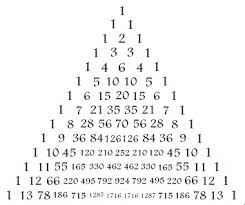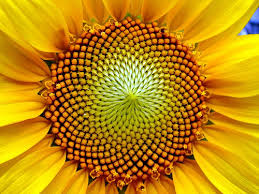"Our ignorance of the laws of variation is profound." Darwin’s espoused.
Origin of Species (1859:167),
Which leads one on to the 'Golden Mean' as exhibited, for example, in the Fibonacci series
(0, 1, 1,2, 3, 5, 8, 13, etc).
Who was Fibonacci?
The "greatest European mathematician of the middle ages", his full name was Leonardo of Pisa, or Leonardo Pisano in Italian since he was born in Pisa, Italy
The Fibonacci series is one of the most interesting mathematical curiosities that pervade
in the natural world. Fibonacci sequences appear in biological settings, in two consecutive Fibonacci numbers, such as branching in trees, arrangement of leaves on a stem, the fruitlets of a pineapple; the flowering of artichoke, an uncurling fern and the arrangement of a pine cone.

In addition, numerous poorly substantiated claims of Fibonacci numbers or golden sections in nature are found in popular sources, e.g. relating to the breeding of rabbits, the spirals of shells, and the curve of waves. The Fibonacci numbers are also found in the family tree of honeybees
and themajority of plants have a number of petals taken from the Fibonacci series.
What are we to make of this?

Origin of Species (1859:167),
Which leads one on to the 'Golden Mean' as exhibited, for example, in the Fibonacci series
(0, 1, 1,2, 3, 5, 8, 13, etc).
Who was Fibonacci?
The "greatest European mathematician of the middle ages", his full name was Leonardo of Pisa, or Leonardo Pisano in Italian since he was born in Pisa, Italy
The Fibonacci series is one of the most interesting mathematical curiosities that pervade
in the natural world. Fibonacci sequences appear in biological settings, in two consecutive Fibonacci numbers, such as branching in trees, arrangement of leaves on a stem, the fruitlets of a pineapple; the flowering of artichoke, an uncurling fern and the arrangement of a pine cone.
In addition, numerous poorly substantiated claims of Fibonacci numbers or golden sections in nature are found in popular sources, e.g. relating to the breeding of rabbits, the spirals of shells, and the curve of waves. The Fibonacci numbers are also found in the family tree of honeybees
and themajority of plants have a number of petals taken from the Fibonacci series.
What are we to make of this?
No comments:
Post a Comment